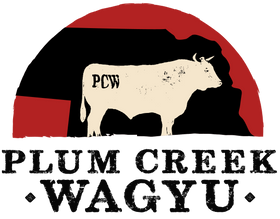Smoking a brisket is an art form, and the stakes are even higher when it comes to Wagyu brisket. Known for its intense marbling, rich flavor, and melt-in-your-mouth texture, Wagyu beef requires a delicate touch to bring out its full potential. Whether you're a seasoned pitmaster or a barbecue enthusiast, this guide will help you perfectly smoke a Wagyu brisket.
1. Choosing the Right Cut
Before you even fire up the smoker, selecting the right Wagyu brisket is crucial. Look for a brisket with plenty of marbling – the fine streaks of fat that run through the meat. This fat will render down during the cooking process, keeping the meat juicy and flavorful.
2. Preparing the Brisket
Trim the Fat
Wagyu brisket typically has a generous fat cap, but you’ll want to trim it down to about 1/4 inch. This allows the fat to render without making the meat greasy. Be careful not to remove too much, as the fat is key to keeping the meat moist.
Seasoning
When it comes to seasoning Wagyu brisket, simplicity is key. A classic Texas-style rub of kosher salt and coarse black pepper lets the natural flavor of the Wagyu shine through. For added depth, you can include a bit of garlic powder or paprika, but avoid overpowering the meat with too many spices.
3. Setting Up Your Smoker
Wood Choice
The choice of wood is critical in smoking Wagyu brisket. Post oak is a traditional favorite in Texas barbecue, offering a mild, smoky flavor that complements the richness of Wagyu. Other good options include hickory or pecan, but steer clear of stronger woods like mesquite, which can overpower the delicate flavor of the Wagyu.
Temperature
Maintain your smoker at a steady temperature of 225°F to 250°F. Wagyu brisket benefits from low and slow cooking, which allows the fat to render gradually, resulting in tender, juicy meat.
4. Smoking the Brisket
The First Phase: The Smoke
Place the brisket on the smoker with the fat side up. This allows the melting fat to baste the meat as it cooks. Smoke the brisket for about 6 to 8 hours, or until the internal temperature reaches 165°F. During this phase, the meat will absorb the smoky flavor and develop a beautiful bark.
The Stall
Around 160°F to 170°F, the brisket will hit “the stall,” where the internal temperature plateaus. This is normal and can last for several hours. Resist the temptation to increase the heat. Instead, you can wrap the brisket in butcher paper or aluminum foil to push through the stall while preserving moisture.
The Finish
Continue smoking until the internal temperature reaches 195°F to 205°F. This is the sweet spot where the collagen breaks down, making the meat incredibly tender. If you’ve wrapped the brisket, keep it wrapped until the end.
5. Resting the Brisket
Resting is a crucial step that should not be skipped. Once the brisket reaches the desired temperature, remove it from the smoker and let it rest, still wrapped, in a cooler or a warm oven for at least an hour. This allows the juices to redistribute throughout the meat, resulting in a more flavorful and tender brisket.
6. Slicing and Serving
When it’s time to slice the brisket, be sure to cut against the grain to ensure tenderness. Start with the flat end and work your way to the point, slicing the meat into 1/4-inch thick slices.
Serve your Wagyu brisket with classic sides like coleslaw, pickles, and a simple barbecue sauce on the side – though with Wagyu, the meat is so rich and flavorful that sauce is entirely optional.
A Labor of Love
Smoking a Wagyu brisket is a labor of love, but the result is worth every minute. With its unparalleled marbling and flavor, Wagyu brisket can elevate your barbecue experience to a whole new level. Whether you’re cooking for a special occasion or just because, this guide will help you achieve brisket perfection every time.
Purchase yours now so you can be ready for those perfect fall football days! (And show off to all your friends.)
Related Posts
Beyond the Steak: Creative Wagyu Recipes for Every Occasion
Take your Wagyu beyond the steak! From juicy burgers to slow-cooked short ribs and mouthwatering tacos, explore creative Wagyu recipes perfect for any occasion.
Mastering the Perfect Wagyu Steak: Cooking Techniques for Every Cut
Master the art of cooking Wagyu steak with expert techniques for grilling, pan-searing, and sous vide. Discover the best methods to bring out the rich marbling and unmatched flavor of every cut.
Pairing Wagyu with Whiskey, Wine, and Cocktails: The Best Drinks to Complement Wagyu Beef
Discover the best drink pairings for Wagyu beef! From rich whiskeys and bold wines to complex cocktails, find out how to complement the rich flavors of Wagyu with the perfect beverage!
Wagyu Myths Debunked: Separating Fact from Fiction
Wagyu beef is often surrounded by myths, from misconceptions about its price to confusion about its fat content. In this post, we debunk the most common myths about Wagyu beef, providing the facts that every meat lover should know.
Wagyu and the Farm-to-Table Movement: How Local Sourcing and Sustainable Ranching Impact Wagyu Quality
Explore how the farm-to-table movement is enhancing the quality of Wagyu beef through local sourcing and sustainable ranching practices. Learn how these practices contribute to better flavor, ethical production, and a positive environmental impact.








